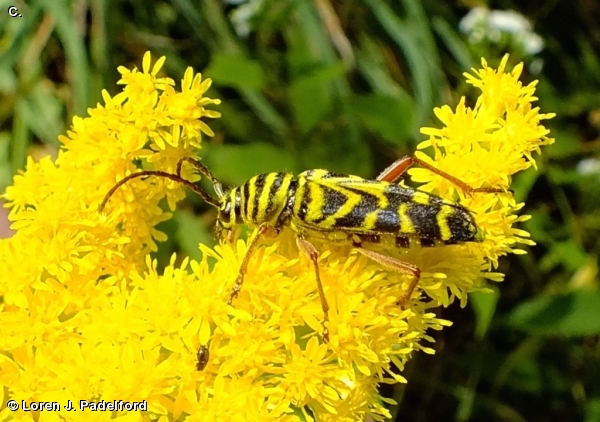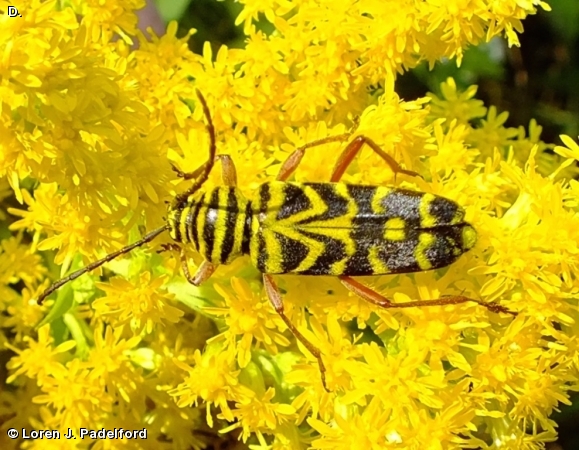
Adults are black, 3/4 of an inch long with a series of bright yellow lines running across the entire body. On the elytra (wing covers) the bands are V-shaped and on the base on the wings they form a distinct “W.” which is very characteristic of this species. The legs are reddish.
This beetle occurs in most of the United States, wherever its host, black locust, grows. The photograph here was taken at the FNA Nature Center. Its overall occurrence at Fontenelle Forest is not known. In Fontenelle Forest black locust trees have been found near the site of the Hermit on History trail. As an adult beetle, it feeds on goldenrod and other flowers in late summer and early fall.
This beetle is sometimes mistaken for a wasp because of the distinctive bright yellow markings on its back. It has been known as a pest of black locust since 1702. For the past 35 years, starting in Salt Lake City, the locust borer has spread and damaged black locust trees. Honey locusts or other trees are not affected by this species.After feasting on flowers and mating, the female adult beetles lay eggs singly or in small groups in bark crevices, cracks, callus tissue around wounds, and other hiding places on the bark of black locust trees. The eggs hatch in 5 to 8 days and the small white larvae (immatures or grubs) bore into the inner bark of the locust trees where they spend the winter as larvae. Larvae resume feeding about the time the leaf buds begin to swell in the spring.
Disclaimer: The content of NatureSearch is provided by dedicated volunteer Naturalists of Fontenelle Forest who strive to provide the most accurate information available. Contributors of the images retain their copyrights. The point of contact for this page is: Eric Scholar.

